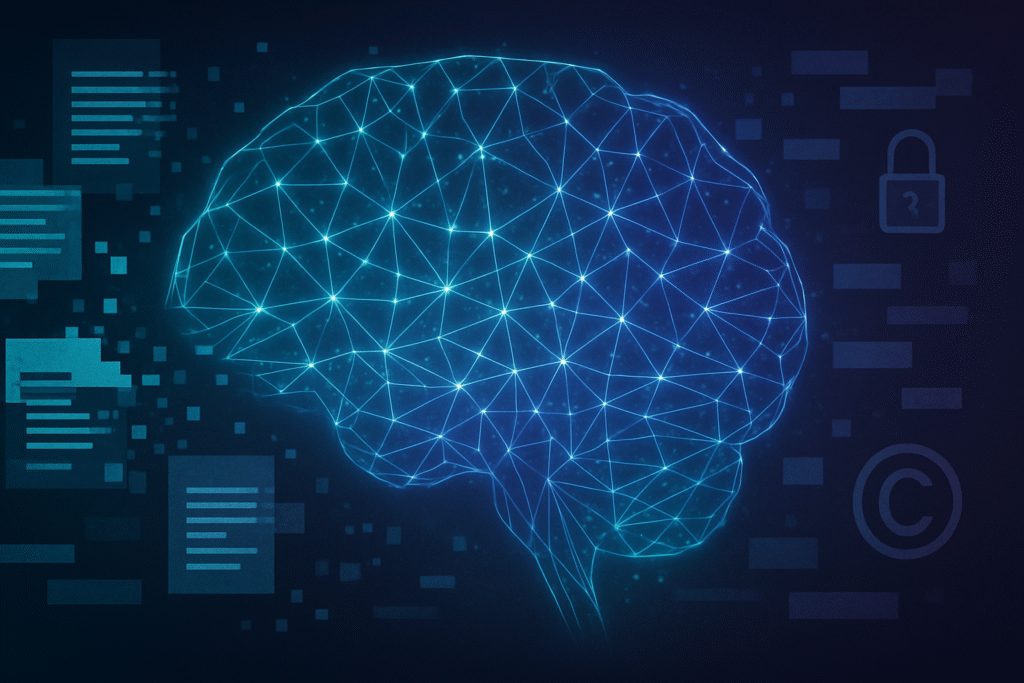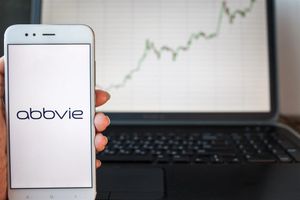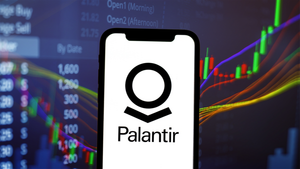
Apple (NASDAQ: AAPL), a titan of the technology industry, finds itself embroiled in a growing wave of class-action lawsuits, facing allegations of illegally using copyrighted books to train its burgeoning artificial intelligence (AI) models, including the recently unveiled Apple Intelligence and the open-source OpenELM. These legal challenges place the Cupertino giant alongside a growing roster of tech behemoths such as OpenAI, Microsoft (NASDAQ: MSFT), Meta (NASDAQ: META), and Anthropic, all contending with similar intellectual property disputes in the rapidly evolving AI landscape.
The lawsuits, filed by authors Grady Hendrix and Jennifer Roberson, and separately by neuroscientists Susana Martinez-Conde and Stephen L. Macknik, contend that Apple's AI systems were built upon vast datasets containing pirated copies of their literary works. The plaintiffs allege that Apple utilized "shadow libraries" like Books3, known repositories of illegally distributed copyrighted material, and employed its web scraping bots, "Applebot," to collect data without disclosing its intent for AI training. This legal offensive underscores a critical, unresolved debate: does the use of copyrighted material for AI training constitute fair use, or is it an unlawful exploitation of creative works, threatening the livelihoods of content creators? The immediate significance of these cases is profound, not only for Apple's reputation as a privacy-focused company but also for setting precedents that will shape the future of AI development and intellectual property rights.
The Technical Underpinnings and Contentious Training Data
Apple Intelligence, the company's deeply integrated personal intelligence system, represents a hybrid AI approach. It combines a compact, approximately 3-billion-parameter on-device model with a more powerful, server-based model running on Apple Silicon within a secure Private Cloud Compute (PCC) infrastructure. Its capabilities span advanced writing tools for proofreading and summarization, image generation features like Image Playground and Genmoji, enhanced photo editing, and a significantly upgraded, contextually aware Siri. Apple states that its models are trained using a mix of licensed content, publicly available and open-source data, web content collected by Applebot, and synthetic data generation, with a strong emphasis on privacy-preserving techniques like differential privacy.
OpenELM (Open-source Efficient Language Models), on the other hand, is a family of smaller, efficient language models released by Apple to foster open research. Available in various parameter sizes up to 3 billion, OpenELM utilizes a layer-wise scaling strategy to optimize parameter allocation for enhanced accuracy. Apple asserts that OpenELM was pre-trained on publicly available, diverse datasets totaling approximately 1.8 trillion tokens, including sources like RefinedWeb, PILE, RedPajama, and Dolma. The lawsuit, however, specifically alleges that both OpenELM and the models powering Apple Intelligence were trained using pirated content, claiming Apple "intentionally evaded payment by using books already compiled in pirated datasets."
Initial reactions from the AI research community to Apple's AI initiatives have been mixed. While Apple Intelligence's privacy-focused architecture, particularly its Private Cloud Compute (PCC), has received positive attention from cryptographers for its verifiable privacy assurances, some experts express skepticism about balancing comprehensive AI capabilities with stringent privacy, suggesting it might slow Apple's pace compared to rivals. The release of OpenELM was lauded for its openness in providing complete training frameworks, a rarity in the field. However, early researcher discussions also noted potential discrepancies in OpenELM's benchmark evaluations, highlighting the rigorous scrutiny within the open research community. The broader implications of the copyright lawsuit have drawn sharp criticism, with analysts warning of severe reputational harm for Apple if proven to have used pirated material, directly contradicting its privacy-first brand image.
Reshaping the AI Competitive Landscape
The burgeoning wave of AI copyright lawsuits, with Apple's case at its forefront, is poised to instigate a seismic shift in the competitive dynamics of the artificial intelligence industry. Companies that have heavily relied on uncompensated web-scraped data, particularly from "shadow libraries" of pirated content, face immense financial and reputational risks. The recent $1.5 billion settlement by Anthropic in a similar class-action lawsuit serves as a stark warning, indicating the potential for massive monetary damages that could cripple even well-funded tech giants. Legal costs alone, irrespective of the verdict, will be substantial, draining resources that could otherwise be invested in AI research and development. Furthermore, companies found to have used infringing data may be compelled to retrain their models using legitimately acquired sources, a costly and time-consuming endeavor that could delay product rollouts and erode their competitive edge.
Conversely, companies that proactively invested in licensing agreements with content creators, publishers, and data providers, or those possessing vast proprietary datasets, stand to gain a significant strategic advantage. These "clean" AI models, built on ethically sourced data, will be less susceptible to infringement claims and can be marketed as trustworthy, a crucial differentiator in an increasingly scrutinized industry. Companies like Shutterstock (NYSE: SSTK), which reported substantial revenue from licensing digital assets to AI developers, exemplify the growing value of legally acquired data. Apple's emphasis on privacy and its use of synthetic data in some training processes, despite the current allegations, positions it to potentially capitalize on a "privacy-first" AI strategy if it can demonstrate compliance and ethical data sourcing across its entire AI portfolio.
The legal challenges also threaten to disrupt existing AI products and services. Models trained on infringing data might require retraining, potentially impacting performance, accuracy, or specific functionalities, leading to temporary service disruptions or degradation. To mitigate risks, AI services might implement stricter content filters or output restrictions, potentially limiting the versatility of certain AI tools. Ultimately, the financial burden of litigation, settlements, and licensing fees will likely be passed on to consumers through increased subscription costs or more expensive AI-powered products. This environment could also lead to industry consolidation, as the high costs of data licensing and legal defense may create significant barriers to entry for smaller startups, favoring major tech giants with deeper pockets. The value of intellectual property and data rights is being dramatically re-evaluated, fostering a booming market for licensed datasets and increasing the valuation of companies holding significant proprietary data.
A Wider Reckoning for Intellectual Property in the AI Age
The ongoing AI copyright lawsuits, epitomized by the legal challenges against Apple, represent more than isolated disputes; they signify a fundamental reckoning for intellectual property rights and creator compensation in the age of generative AI. These cases are forcing a critical re-evaluation of the "fair use" doctrine, a cornerstone of copyright law. While AI companies argue that training models is a transformative use akin to human learning, copyright holders vehemently contend that the unauthorized copying of their works, especially from pirated sources, constitutes direct infringement and that AI-generated outputs can be derivative works. The U.S. Copyright Office maintains that only human beings can be authors under U.S. copyright law, rendering purely AI-generated content ineligible for protection, though human-assisted AI creations may qualify. This nuanced stance highlights the complexity of defining authorship in a world where machines can generate creative output.
The impacts on creator compensation are profound. Settlements like Anthropic's $1.5 billion payout to authors provide significant financial redress and validate claims that AI developers have exploited intellectual property without compensation. This precedent empowers creators across various sectors—from visual artists and musicians to journalists—to demand fair terms and compensation. Unions like the Screen Actors Guild – American Federation of Television and Radio Artists (SAG-AFTRA) and the Writers Guild of America (WGA) have already begun incorporating AI-specific provisions into their contracts, reflecting a collective effort to protect members from AI exploitation. However, some critics worry that for rapidly growing AI companies, large settlements might simply become a "cost of doing business" rather than fundamentally altering their data sourcing ethics.
These legal battles are significantly influencing the development trajectory of generative AI. There will likely be a decisive shift from indiscriminate web scraping to more ethical and legally compliant data acquisition methods, including securing explicit licenses for copyrighted content. This will necessitate greater transparency from AI developers regarding their training data sources and output generation mechanisms. Courts may even mandate technical safeguards, akin to YouTube's Content ID system, to prevent AI models from generating infringing material. This era of legal scrutiny draws parallels to historical ethical and legal debates: the digital piracy battles of the Napster era, concerns over automation-induced job displacement, and earlier discussions around AI bias and ethical development. Each instance forced a re-evaluation of existing frameworks, demonstrating that copyright law, throughout history, has continually adapted to new technologies. The current AI copyright lawsuits are the latest, and arguably most complex, chapter in this ongoing evolution.
The Horizon: New Legal Frameworks and Ethical AI
Looking ahead, the intersection of AI and intellectual property is poised for significant legal and technological evolution. In the near term, courts will continue to refine fair use standards for AI training, likely necessitating more licensing agreements between AI developers and content owners. Legislative action is also on the horizon; in the U.S., proposals like the Generative AI Copyright Disclosure Act of 2024 aim to mandate disclosure of training datasets. The U.S. Copyright Office is actively reviewing and updating its guidelines on AI-generated content and copyrighted material use. Internationally, regulatory divergence, such as the EU's AI Act with its "opt-out" mechanism for creators, and China's progressive stance on AI-generated image copyright, underscores the need for global harmonization efforts. Technologically, there will be increased focus on developing more transparent and explainable AI systems, alongside advanced content identification and digital watermarking solutions to track usage and ownership.
In the long term, the very definitions of "authorship" and "ownership" may expand to accommodate human-AI collaboration, or potentially even sui generis rights for purely AI-generated works, although current U.S. law strongly favors human authorship. AI-specific IP legislation is increasingly seen as necessary to provide clearer guidance on liability, training data, and the balance between innovation and creators' rights. Experts predict that AI will play a growing role in IP management itself, assisting with searches, infringement monitoring, and even predicting litigation outcomes.
These evolving frameworks will unlock new applications for AI. With clear licensing models, AI can confidently generate content within legally acquired datasets, creating new revenue streams for content owners and producing legally unambiguous AI-generated material. AI tools, guided by clear attribution and ownership rules, can serve as powerful assistants for human creators, augmenting creativity without fear of infringement. However, significant challenges remain: defining "originality" and "authorship" for AI, navigating global enforcement and regulatory divergence, ensuring fair compensation for creators, establishing liability for infringement, and balancing IP protection with the imperative to foster AI innovation without stifling progress. Experts anticipate an increase in litigation in the coming years, but also a gradual increase in clarity, with transparency and adaptability becoming key competitive advantages. The decisions made today will profoundly shape the future of intellectual property and redefine the meaning of authorship and innovation.
A Defining Moment for AI and Creativity
The lawsuits against Apple (NASDAQ: AAPL) concerning the alleged use of copyrighted books for AI training mark a defining moment in the history of artificial intelligence. These cases, part of a broader legal offensive against major AI developers, underscore the profound ethical and legal challenges inherent in building powerful generative AI systems. The key takeaways are clear: the indiscriminate scraping of copyrighted material for AI training is no longer a viable, risk-free strategy, and the "fair use" doctrine is undergoing intense scrutiny and reinterpretation in the digital age. The landmark $1.5 billion settlement by Anthropic has sent an unequivocal message: content creators have a legitimate claim to compensation when their works are leveraged to fuel AI innovation.
This development's significance in AI history cannot be overstated. It represents a critical juncture where the rapid technological advancement of AI is colliding with established intellectual property rights, forcing a re-evaluation of fundamental principles. The long-term impact will likely include a shift towards more ethical data sourcing, increased transparency in AI training processes, and the emergence of new licensing models designed to fairly compensate creators. It will also accelerate legislative efforts to create AI-specific IP frameworks that balance innovation with the protection of creative output.
In the coming weeks and months, the tech world and creative industries will be watching closely. The progression of the Apple lawsuits and similar cases will set crucial precedents, influencing how AI models are built, deployed, and monetized. We can expect continued debates around the legal definition of authorship, the scope of fair use, and the mechanisms for global IP enforcement in the AI era. The outcome will ultimately shape whether AI development proceeds as a collaborative endeavor that respects and rewards human creativity, or as a contentious battleground where technological prowess clashes with fundamental rights.
This content is intended for informational purposes only and represents analysis of current AI developments.
TokenRing AI delivers enterprise-grade solutions for multi-agent AI workflow orchestration, AI-powered development tools, and seamless remote collaboration platforms.
For more information, visit https://www.tokenring.ai/.





